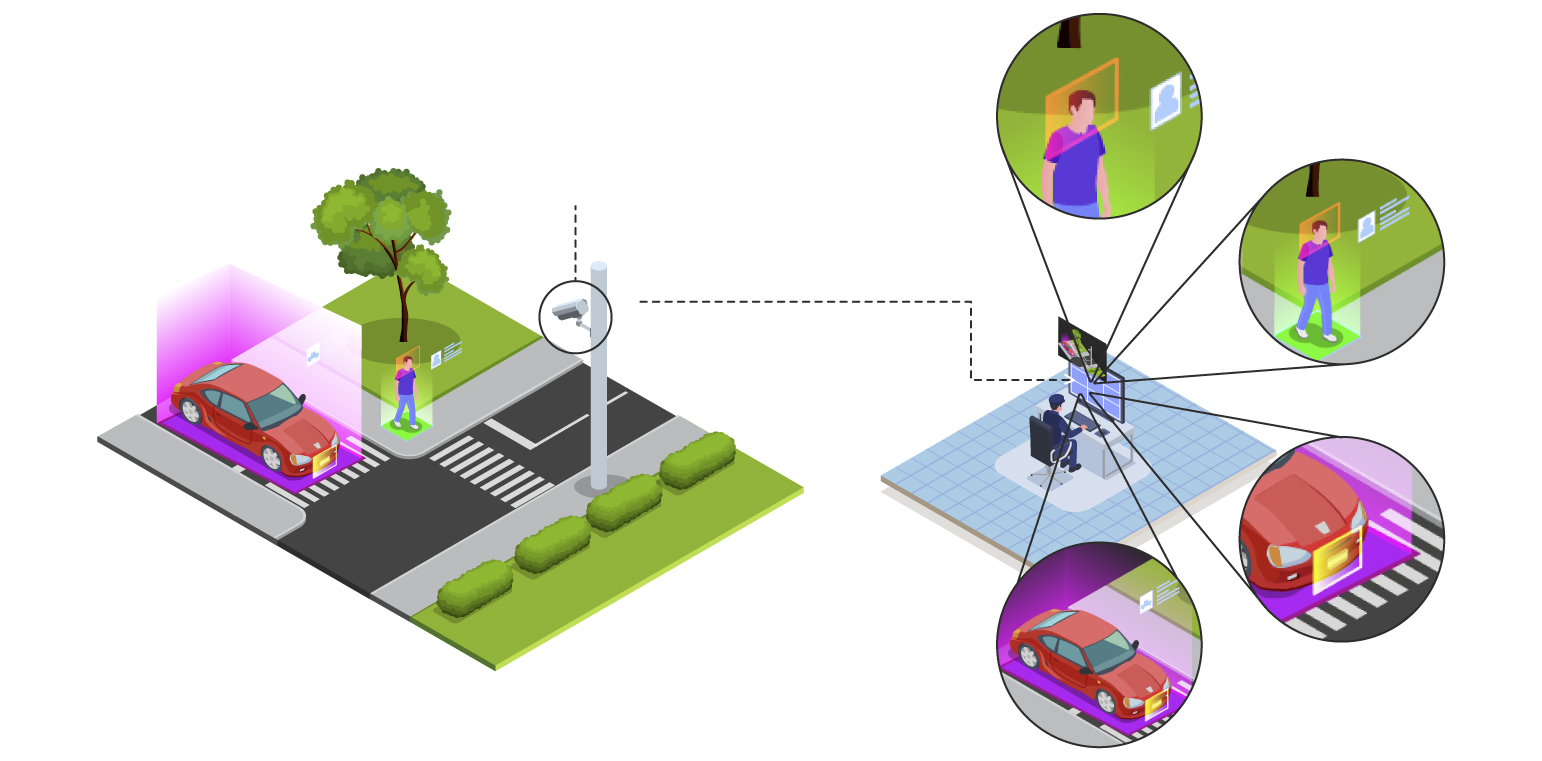
Smart cities are at the forefront of technological innovation, utilizing advanced systems to enhance safety, efficiency, and quality of life for residents.
Among the pivotal technologies driving this transformation are AI deterring cameras, which are revolutionizing how urban areas approach surveillance and security.
These smart devices integrate artificial intelligence (AI) to not only monitor but also actively deter potential threats, making them indispensable in the framework of modern city management.
Understanding AI Deterring Cameras
AI deterring cameras go beyond the traditional capabilities of closed-circuit television (CCTV) systems.
They leverage machine learning algorithms and AI-powered analytics to detect, analyze, and respond to unusual activities in real time.
By combining surveillance with proactive deterrence mechanisms, such as automated alerts, flashing lights, or pre-recorded warnings, these cameras aim to prevent incidents before they occur.
Key features include:
- Real-time threat detection: Identifying suspicious behavior or unauthorized access instantly.
- Facial and object recognition: Recognizing faces, license plates, or specific objects for enhanced security.
- Automated deterrence: Using sound, light, or alerts to discourage potential criminal activities.
- Data analysis: Providing actionable insights for law enforcement and city planners.
The Role of AI Deterring Cameras in Smart Cities
Smart cities aim to create safer, more livable environments by leveraging interconnected systems and data.
AI deterring cameras play a crucial role in achieving these objectives by addressing safety concerns, optimizing resource allocation, and promoting trust among citizens.
1. Enhancing Public Safety
One of the primary roles of AI deterring cameras in smart cities is enhancing public safety. These cameras can:
- Detect and deter criminal activities such as vandalism, theft, and assault.
- Monitor high-traffic areas for accidents or unusual behavior.
- Assist in locating missing persons through advanced facial recognition capabilities.
- Provide real-time alerts to law enforcement, enabling rapid response to potential threats.
For example, AI deterring cameras installed in public parks can identify loitering or unauthorized gatherings late at night and issue automated warnings to disperse crowds, thereby preventing potential crimes.
2. Traffic Management and Accident Prevention
In addition to deterring crime, AI deterring cameras are integral to traffic management. These systems can:
- Analyze vehicle and pedestrian flow to optimize traffic signals and reduce congestion.
- Detect speeding vehicles or illegal parking, issuing alerts to authorities.
- Monitor accident-prone areas, triggering immediate assistance during emergencies.
By integrating AI deterring cameras with broader smart city systems, urban areas can improve road safety and reduce accidents, benefiting both commuters and city planners.
3. Monitoring Critical Infrastructure
Protecting critical infrastructure—such as power plants, transportation hubs, and water treatment facilities—is essential for maintaining city operations. AI deterring cameras can:
- Detect unauthorized access to restricted areas.
- Identify unusual patterns, such as abandoned objects near sensitive sites, which could indicate potential threats.
- Provide 24/7 surveillance with minimal human intervention.
For instance, AI cameras at subway stations can monitor for unattended bags and alert authorities within seconds, significantly reducing response times to potential security risks.
4. Promoting Citizen Engagement and Trust
Transparency and safety are cornerstones of successful smart city initiatives. AI deterring cameras promote citizen trust by:
- Demonstrating a commitment to public safety through visible deterrence measures.
- Reducing the reliance on intrusive surveillance practices by focusing only on unusual activities.
- Ensuring data privacy by anonymizing footage and adhering to strict data protection regulations.
When citizens feel secure and see tangible benefits from AI-powered systems, they are more likely to support smart city initiatives and participate in community-building efforts.
Challenges and Ethical Considerations
Despite their numerous benefits, the deployment of AI deterring cameras in smart cities comes with challenges that require careful consideration.
1. Privacy Concerns
AI deterring cameras collect vast amounts of data, raising concerns about privacy and surveillance overreach.
Cities must ensure that these systems are used responsibly, with clear regulations governing data collection, storage, and access.
2. Bias in AI Algorithms
AI systems can inherit biases from their training data, potentially leading to unequal treatment of individuals based on race, gender, or other factors.
Regular audits and updates to algorithms are essential to maintain fairness.
3. Cybersecurity Risks
As interconnected devices, AI deterring cameras are susceptible to hacking.
Smart cities must invest in robust cybersecurity measures to protect these systems from unauthorized access and potential misuse.
Real-World Applications
Cities worldwide are already reaping the benefits of AI deterring cameras. For example:
- Singapore: Known for its advanced smart city infrastructure, Singapore uses AI cameras to manage traffic, monitor public spaces, and ensure compliance with safety regulations.
- London: AI-powered cameras have been deployed in London’s transport system to enhance security and streamline passenger flow.
- Dubai: AI deterring cameras are integrated into Dubai’s smart city network, assisting in crime prevention and infrastructure monitoring.
These success stories highlight the transformative potential of AI deterring cameras when implemented thoughtfully and responsibly.
The Future of AI Deterring Cameras in Smart Cities
The role of AI deterring cameras in smart city surveillance will continue to expand as technology advances. Future innovations may include:
- Improved AI algorithms: Enhanced accuracy in threat detection and behavior analysis.
- Integration with IoT devices: Seamless communication with other smart systems, such as drones and autonomous vehicles.
- Sustainability features: Energy-efficient designs that align with smart city goals of reducing carbon footprints.
Conclusion
AI deterring cameras are a cornerstone of smart city surveillance, offering unparalleled benefits in crime prevention, traffic management, and infrastructure monitoring.
While challenges such as privacy concerns and cybersecurity risks must be addressed, these systems have the potential to transform urban environments into safer, more efficient spaces.
As cities worldwide embrace the possibilities of AI technology, AI deterring cameras will undoubtedly play a central role in shaping the future of urban living.





Leave a Reply